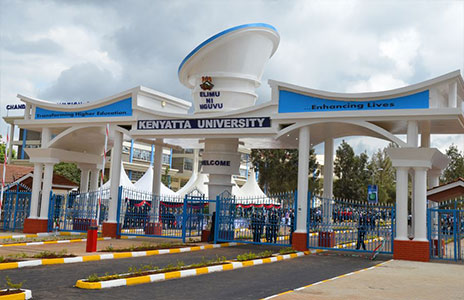In a significant development for Kenyan students relying on educational funding, the Higher Education Loans Board (HELB) has announced the disbursement of loans for batches 5852 and 5892. This news comes as a beacon of hope for thousands of students who have been anxiously waiting to receive financial aid to continue their education.
On December 18, 2024, HELB took to their official X handle to confirm that batches 5852 and 5892 have now been disbursed. This announcement was met with a sigh of relief from students and guardians across the country, many of whom had been following HELB’s social media for any updates on their loan status. The disbursement of these batches follows a period of uncertainty caused by regulatory hurdles related to the National Funding Model (NFM).
The delays in loan disbursement have been primarily due to the suspension of the NFM, which was intended to streamline the allocation of educational funds. However, its implementation has faced legal and administrative challenges, leading to a bottleneck in the loan disbursement process. This situation has left many students in a financial limbo, with some unable to pay tuition fees or cover living expenses, thus affecting their academic progress.
For students like those in batches 5852 and 5892, this disbursement means they can now settle their educational costs and perhaps breathe easier knowing their funding is secured. However, the journey to this point has been fraught with challenges. Students have had to navigate through a period of financial instability, with many resorting to temporary solutions like part-time jobs, support from family, or even deferred studies.
HELB has been using its social media presence, particularly on X, to manage expectations and communicate directly with students. They’ve responded to numerous queries from individuals asking about their specific batch numbers, providing personalized updates, and explaining the broader context of the delays. Today’s announcement is a result of these efforts, showcasing HELB’s commitment to resolving the backlog of loan disbursements.
Once a batch is confirmed as paid, the money is transferred either directly into the student’s bank account or to their institution for tuition fees, depending on the nature of the loan. For upkeep loans, students receive notifications to check their bank accounts or M-Pesa for the funds. This process aims to ensure that the funds are used for educational purposes, with HELB particularly focusing on direct institutional payments for self-sponsored students to commence in January 2025.
The disbursement of these batches is a step forward, but it also highlights the broader issues within Kenya’s student loan system. The challenges faced by HELB and students have sparked conversations about the need for a more resilient funding model. There’s a growing call for:
- Emergency Funding Mechanisms: To support students when such delays occur in the future.
- Enhanced Transparency: More regular and detailed updates on the loan process to keep students informed.
- Flexible Funding Options: Perhaps allowing students to opt for different funding models or sources.
The reaction from students has been overwhelmingly positive, with relief being the most common sentiment. Social media platforms have been abuzz with students sharing their joy, albeit with a cautious note, understanding that not all batches are cleared yet. There’s a collective hope that this momentum will continue, and other batches will see their funds soon.
With the disbursement of these batches, universities and colleges have also breathed a sigh of relief. Many institutions had to extend deadlines for fee payments or provide provisional registration to students awaiting their HELB funds. The confirmation of these disbursements allows for more stable academic planning and reduces the administrative burden of managing students’ financial situations.
While the disbursement of batches 5852 and 5892 is a positive step, the journey for students in other batches continues. HELB has promised to expedite the process for remaining batches, urging patience as they navigate through the NFM suspension’s aftermath. The board has also hinted at potential policy adjustments to prevent such large-scale delays in the future, possibly including:
- Streamlined Compliance Processes: To quickly adapt to regulatory changes without major disruptions.
- Enhanced Communication Channels: To keep students updated in real-time about their loan statuses.
- Diversification of Funding Sources: To mitigate the risk of delays affecting the entire student population.
The disbursement of loans for batches 5852 and 5892 by HELB marks a significant milestone in addressing one of the year’s most pressing concerns for Kenyan students. While this news brings immediate relief to some, it serves as a reminder of the systemic challenges within educational funding. As HELB works to clear the remaining backlog, the broader educational community, including policymakers, educators, and students, must reflect on how to bolster the system against future disruptions.
For those still awaiting their loans, the message from HELB is one of hope and assurance. They are encouraged to stay tuned to @HELBpage for further updates, as the board continues its efforts to ensure no student’s education is put on hold due to funding issues. This episode in Kenyan higher education funding will hopefully lead to more robust, student-centric solutions moving forward.





